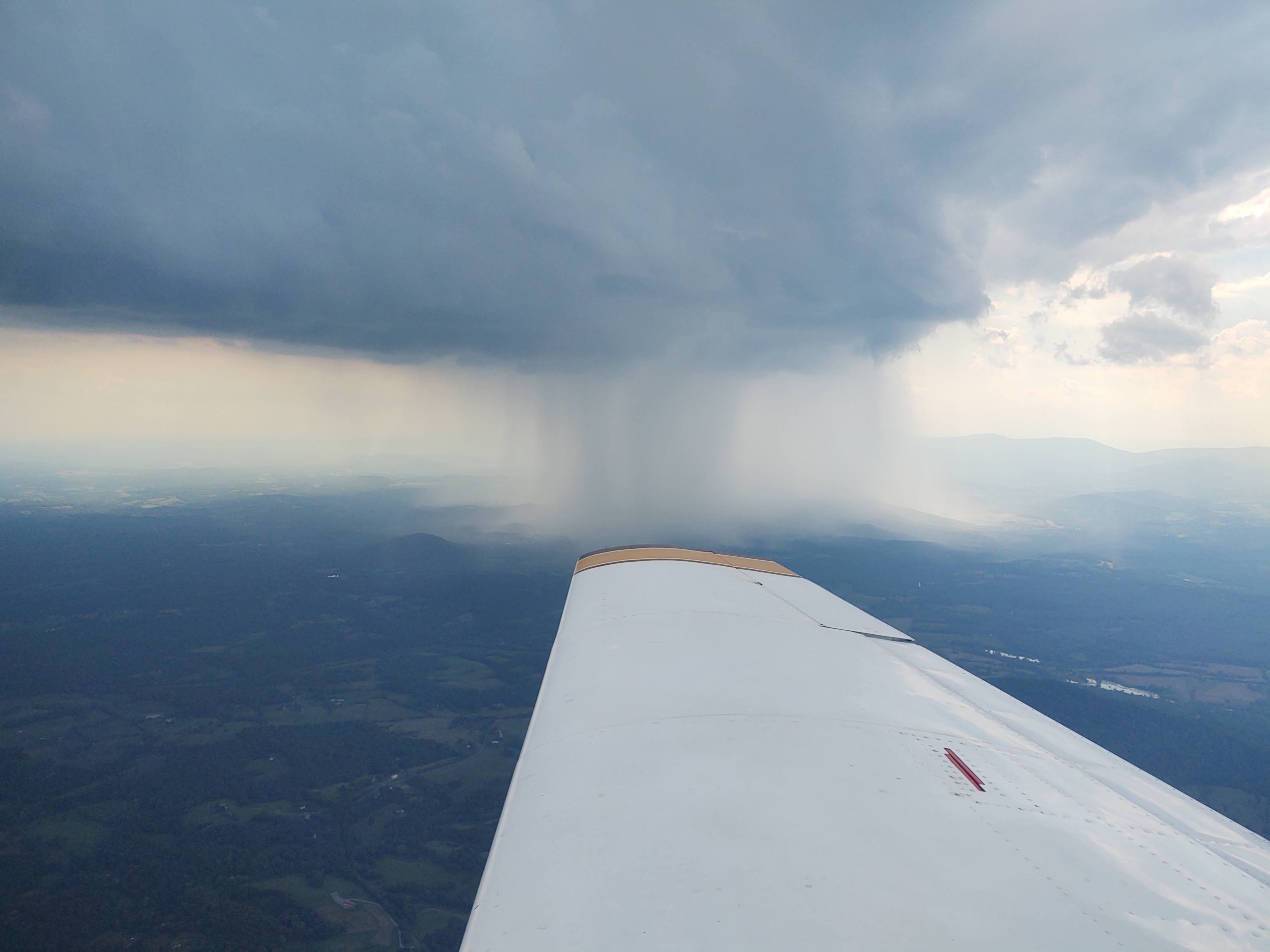Decisions on the Fly
|
Getting your Trinity Audio player ready...
|

If you’ve ever had to change your route to get around cloud-borne hazards like storms or ice, you know how crucial it is to have two requirements met: a solid escape plan, and the ability to fly it. Most days, it’s a simple change in course or altitude to stay in the clear. If conditions were sketchy enough, we certainly have the option to delay or reschedule the mission. But there are plenty of times when weather does shift in unpredictable ways and there you are at altitude, looking for a clear spot to head to. That’s when having a selection of tools ready at launch can go a long way to help you make those changes quickly and comfortably.
Hopefully, we all start out with a Plan B, even a basic one like a turnback for home should conditions ahead get worse than expected. That plan is like a magic door with a key. Sometimes, the door is large and already wide open: That’s the most desirable. Other times, it’s a squeeze-through escape hatch with only one key that fits, or maybe a tricky combination lock. Not ideal, but we can make it a practice of keeping an eye on the door and be ready to sneak out if any concerns arise. In any case, that pre-flight weather briefing lets you form the overall escape plan. So, even if it’s looking comfortable for the entire flight, fuel up and prepare as if you’re going to need that alternate. Maybe it’s a backup route you keep on the spare EFB, or another airport selected for its approaches and services. You now have a door with a key and extra locksmith tools, plus an antidote to get-there-itis.
Storms in Sight
Here’s an example from a flight I made with another pilot from Florida to Wisconsin, a common trip when spring makes it to the Midwest. Such routes typically traverse Alabama, Tennessee, Kentucky and Illinois. On departure day, we noted a tiny line of rain forming west of Memphis creeping northeast towards the route; this was on the watchlist. As it was doubtful if we could get ahead or north of it in time should the line develop, the Plan B was to remain south and west of the weather. We also pre-decided to fly high enough to be on top of the stable cloud layer in Florida and avoid IMC after that, so we could always keep visual contact with any buildups. That kept the door in sight. After a check to see if there were plenty of feasible airports on the alternate route (there were), we departed for the first fuel stop in central Alabama. There, we saw that the line had developed into tall cumulus, but the new briefing didn’t make clear if those would mature. The options were to stop there and call it a day, or get a new clearance to Little Rock to spend the night, well southwest of the weather.
We chose the latter because there were at least a couple hours of progress we could make on the new route. But in only half that time, the buildups had exploded into storms spreading out in all directions, including our way. The door needed a new combination, as multiple heading changes pushed us further southwest. It was also shrinking: Although it might’ve been a good two hours to the south, there was the coastline as a practical limit. We were going to Louisiana. In the midst of that exciting leg, ATC was so helpful – cheerful, actually, probably because this was their time to shine. I could hear airliners and other jets much higher and faster than our four-piston bird working on similar strategies to stay in the clear. It was a great confirmation to never hesitate to divert, regardless of the aircraft type or operation.

All-Season Mindset
The same strategy works to avoid icing conditions, another hazard best avoided by staying out of the clouds. You can plan altitudes to fly above or below cloud layers, and deviate around them as well. Cold seasons do offer great visibility when in visual conditions, making weather avoidance easier. Meanwhile, stable cloud layers common in winter months are also pretty easy to anticipate. But these can extend for sometimes hundreds of miles, making it hard to find openings for climbs and descents – escape hatches might require a lot more fuel. And on cold, misty, low-visibility days, ice near the ground, even if above approach minima, is usually a no-go for light aircraft anyway. Speaking of days, trips after dark take away the visual advantage for in-cloud hazards, requiring extra caution or delays.
From storms to icing, or to avoid turbulence or low IMC—anything that requires flying in the clear—this approach can help with any need to avoid weather hazards. Some considerations:
– Use flight plans that keep wide-open doors in VMC if there are concerns; there’s no reason to fly up into the clouds just because it’s the shortest route. Flying a few more miles is better than getting into danger.
– When requesting changes, be as specific as you can. Example: “Cessna 234, request 20 degrees left for weather, for 50 miles.” Or, have a VOR or fix to head for; add the next waypoint you wanted to get back to and you now have a picture of your diversion on the map (plus you can couple to the autopilot). You might not know how far to take the new leg; that’s OK. The typical ATC reply: “Deviation left of course approved, report when direct XXX.” If you need to go further out or need another turn or fix, let them know. Never feel locked into something because it was your idea.
– Traffic and/or airspace in the way of a desired deviation might delay the request, so give ATC a heads-up as early as practical. If you see a layer of icy clouds ahead in the distance, start working on the escape plan. If you find in a few miles you’re going to be clear of it, that’s better than being in it. For precipitation, ATC will often give you early information from weather radar with an offer to help you deviate. If you need a minute to formulate a plan, a “stand by” or “will advise in ten miles” works great.
How far you’re willing to go in shifting headings, altitudes and destinations is ultimately a PIC decision, and that can include not just one, but a number of changes. Having an early assessment to prepare for possible changes helps frame the overall strategy to avoid bad weather. That way, you’re ready. So when a flight ends with the feeling you were prepared, you won’t regret going in the first place.
Tell Us What You Think
- Decisions on the Fly - September 2, 2025
- The Art of Briefing the Approach - July 29, 2025



Leave a Reply
Want to join the discussion?Feel free to contribute!